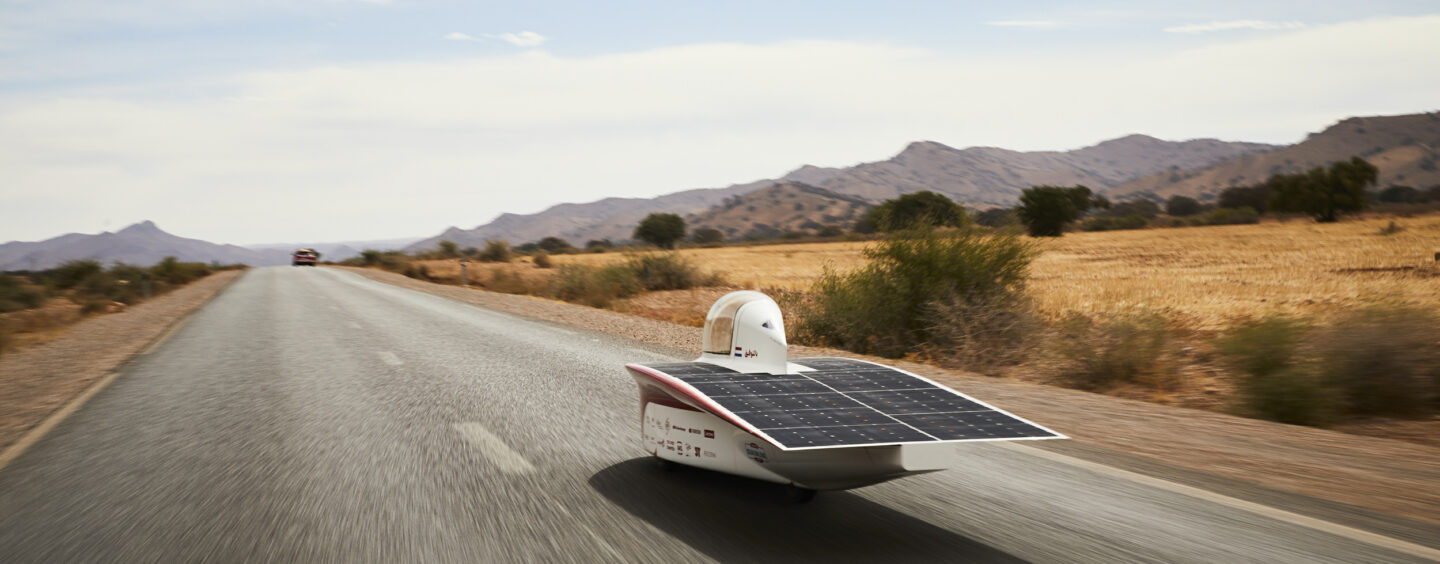Electric cars are hot stuff right now and solar power generation is also on the rise – but what happens when you bring these two technologies together?
The result is cutting edge vehicles powered only by sunlight – and with exciting new technologies, it’s only natural to see who has the best.
The natural home for solar powered cars is under the hot desert sun and this year saw the first ever Solar Challenge Morocco. Taking place over 2,500km, this gruelling race pits contestants against both each other and the harsh desert and mountain landscape of the north African country. And for one young team of student engineers, Yokogawa Test&Measurement, was there to help them really go far, crossing the finish line in first place.
Solar Team Twente comprises aerodynamic, electrical, mechanical and structural engineers from the University of Twente and the Saxion University of Applied Sciences in the Netherlands.
To win, Solar Team Twente knew it had to squeeze every last watt from the power generation system of its RED E racing car, and also use that power very efficiently over the course of the event. Accurate measurement was the key and Yokogawa was happy to oblige with its WT5000 Precision Power Analyzer. The company’s most accurate power analyzer, the WT5000 has a specified measurement accuracy of ±0.03%.
In any solar race car, there are four important electrical systems that need to be optimized: the array of solar panels; the battery and its management system; the inverter (motor drive), which converts the solar panels’ direct current output to a three-phase alternating current supplied to the motor; and the motor itself. The team was aiming for better than 99% efficiency for the electrical power conversion circuits.
Preparing for the race, the team’s engineers needed to improve the motor, the battery and the energy generation system if it was to move ahead of its rivals on the demanding African course. Even small improvements can make a significant difference. “If all the components are just 0.01% better than the competition’s, then you already have an advantage before you reach the start line in a race,” says the team’s Camiel Lemmens. “So, precision measurement is a crucial element of our success.”
The team used the WT5000 Precision Power Analyzer to complete four crucial tasks. The firstly was to analyze solar PV cells to chaos the most efficient. Assessing the battery cells and selecting those the greatest energy capacity came next.
Another vital goal was to validate the accuracy of the ‘fuel gauge’, the car’s on-board sensor that measures the battery’s state of charge. By subtracting output from input, it can calculate the residual charge in the battery. This required extremely accurate continuous measurement of current flows, something the WT5000 took in its stride, with a sampling rate of 10M samples/s that exceeds the data refresh rate required to validate RED E’s fuel gauge system
When it came to the ‘fuel gauge’ the team used the WT5000 to reveal something interesting. “With the WT5000, we also discovered that the current sensors in the fuel-gauge circuit had an offset, which were making the car’s state-of-charge measurements inherently inaccurate,” said the team’s Rob Krawinkel. “By compensating for the offset, we could confidently provide the driver with a vital extra 1 or 2 km of range from the battery at a given speed.”
The fourth task was to measure the power output of the motor system, including the inverter and the motor itself, at a range of power input values, to enable the team to refine the design and incrementally improve its efficiency. This also called for extremely accurate power analysis at a high sampling frequency.
Another success for the team was developing its own custom powertrain and components
All this work paid off, with the team crossing the finish line ahead of the pack – it certainly overcome the disappointment of being knocked out of the 2019 Bridgestone World Solar Challenge in Australia, when the team’s car was destroyed in a freak gust of wind.
With the continued help of Yokogawa Test&Measurement, the team are looking forward to more success at the World Solar challenge 2023 in Australia.
Case Study
Download the case study to learn more on how Solar Team Twente beat all comers to win the first ever Solar Challenge Morocco. And how Yokogawa Test&Measurement helped them design their winning car.
Watch the video



No Comments so far
Jump into a conversationNo Comments Yet!
You can be the one to start a conversation.